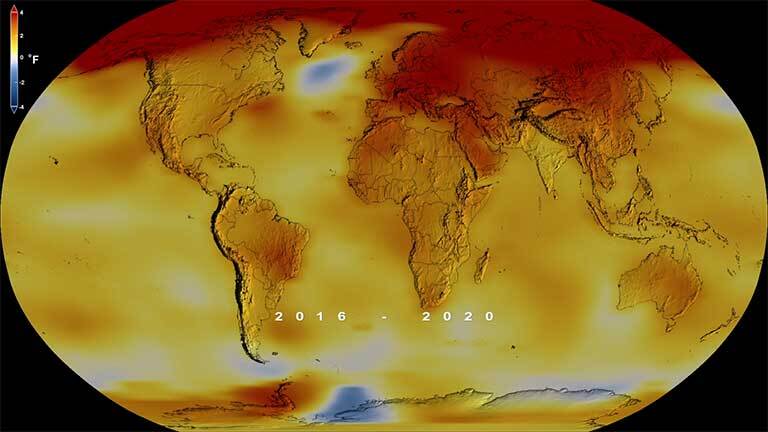Starting off 2021 Hot!
January 27, 2021
Just as we were looking for better news going into 2021, the end of 2020 left us on a hot note. The average global surface temperature of Earth in 2020 ended in a tie with 2016 as the warmest year on record, according to a NASA analysis. For the last decade, the concern of a warming and changing world has been pinpointed to the impact of human activities on our Earth, specifically greenhouse gasses causing almost a 2-degree Fahrenheit warm up since the 19th century. While the long-term trend of the Earth warming continues on, 2020 had two large effects that played an important role in the 1.84-degree Fahrenheit warm up above the baseline average.
During the first half of 2020, the Australian bush fires torched 46 million acres of land. This caused a change in the amount of sunlight that could reach the earth’s surface due to the high amounts of smoke and other particles that were released more than 18 miles high into the atmosphere. These unfortunate events caused the sunlight from entering the atmosphere and likely cooled it off. However, the second half of the year with the global shutdowns caused by the coronavirus pandemic, had a reverse effect on the atmosphere. The pandemic yielded a reduction in air pollution and carbon dioxide emissions in many areas, which allowed more sunlight to enter into the atmosphere, thus having a warm up effect. With the overall CO2 emissions continuously increasing, the amount of avoided warming every year will be miniscule.
Another big indicator in global temperature changes comes from a natural heat cycle called El Nino-Southern Oscillation. The year started off in a slightly warm phase, making a small difference on the average overall temperature. In 2016, the previous record year, El Nino had a significant boost on the climate. While 2020 had a mild year from El Nino, it is evidence that greenhouse gases will continue to warm our climate. There is good news and bad news to come from the long-term warming. The good news is that only parts of the earth is warming faster than others. The areas that are hit harder include the Arctic and oceanic regions. The bad news is that they are warming three times as fast than the rest of the globe. This has caused the melting and loss of the arctic sea ice, which declines by thirteen percent each decade, according to a GISTEMP analysis.
According to NASA’s Goddard Institute for Space Studies Director, Gavin Schmidt, “The last seven years have been the warmest seven years on record, typifying the ongoing and dramatic warming trend.” There is nothing to panic about as what is important in the long-term trends. The trends suggest that the records will continue to be broken, but we need to understand the human impact on the climate and adapt to the changing environment. The warming weather has issued heat waves, rising sea levels, and shifts in animal habitats. The key is understanding the long-term trends to learn and adapt by planting new crops and managing other key resources connected to the climate to combat the damage caused.
The outlook for 2021’s weather cycle doesn’t look too promising either. Starting the year off hot, the warmer the ocean water, the more powerful of storms. Warm surface water help storms gain energy that leads to harmful wind and surges. The hot atmosphere won’t only lead to more record-breaking temperature years, but also record-breaking intense hurricanes. Just like what we saw in Australia, there could be an increased amount of fire danger in the coming year due to a drier atmosphere. Let’s hope that we are best prepared for what 2021 has in store for us.













